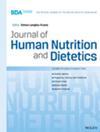Socio-Demographic Determinants of Mediterranean Diet Adherence: Results of the EU-National Health Interview Survey (EHIS-3)
Abstract
Background
Despite the well-known benefits of the Mediterranean diet (MD), low adherence is observed globally, highlighting the need to investigate the underlying causes of this trend. Large-scale, periodically repeated surveys, such as the European Health Interview Survey (EHIS), could be useful for the investigation of the factors that influence adherence to healthy dietary patterns. National EHIS-3 in Greece was designed to collect data on the consumption of all food groups, making it possible to determine adherence to MD.
Methodology
This study aimed to investigate the socioeconomic factors that influence MD adherence by conducting a secondary data analysis from 7706 participants aged 15–85 years who participated in the 2019 national EHIS. MD adherence was evaluated by MedDietScore. Bivariate comparisons between the score tertiles and socioeconomic groups were performed. Logistic regression analyses were used to estimate the association between MedDietScore tertiles and demographic and socioeconomic factors, using high adherence as the reference category. Finally, cluster analysis was applied to identify the most significant factors in relation to the classification of the participants in MD adherence groups.
Results
Educational level, followed by income status, emerged as the most significant factor associated with adherence to MD. Individuals who have attained only primary education had a 3.80 times higher likelihood of presenting low MD adherence instead of high MD adherence compared to persons with tertiary education. Individuals in the lower income group had 2.53 times higher odds of being in the low MD adherence instead of high MD adherence than individuals in the higher income group. These relationships remained statistically significant after adjusting for confounding factors. The group that most frequently adhered to high MD (53.4%) comprised individuals who had tertiary education, higher income, and were couples without children. Conversely, those with primary or secondary education who are single parents or live in one-person households and fall into the lower and medium income groups are most likely to have low MD adherence (44.8%).
Conclusions
Public policies to promote MD adherence should consider socioeconomic factors. Integrating questions to evaluate adherence to dietary patterns into EHIS would allow for future intercountry and longitudinal comparisons.


 求助内容:
求助内容: 应助结果提醒方式:
应助结果提醒方式:


